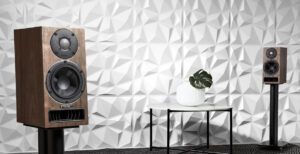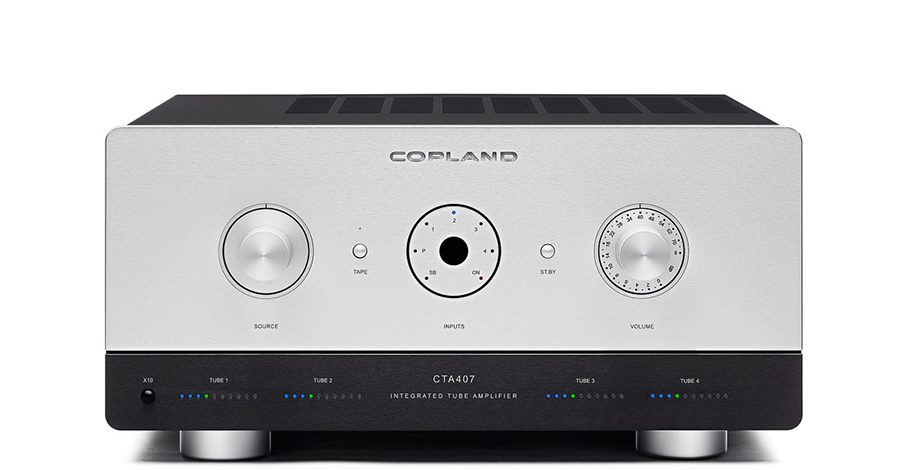
I am happy enough to admit that almost every new box that arrives here to be tested still generates a little burst of excitement; the day it doesn’t is probably the one I call it quits. My levels of excitement do vary of course; there’s only so much euphoria you can generate on receipt of another pair of wireless earphones, but this is balanced against devices that I’m genuinely delighted to get my hands on. The Copland CTA407 is one of those devices.
This isn’t so much about what the CTA407 is as what its ancestor was. The Copland CTA405 is one of my very favourite products of all time. Contained within its well-proportioned, classically Scandinavian chassis was an amplifier that balanced accuracy and musicality in a way that felt effortless. It conspired to be greater than the sum of its parts and is one of a select group of components I’ll probably buy online late at night while ‘tired and emotional.’ The CTA407 has some mighty big shoes to fill.
A good start
It gets off to a good start though, because many of the underpinnings of the CTA407 trace back to the CTA405 and do so specifically to the CTA405 and not the CTA405a that succeeded it. The CTA407 is fitted with a quartet of 6550 output valves which is the same complement as the original CTA405. When the KT120 appeared, the CTA405 was modified to accommodate it, becoming the CTA405a. This required the addition of a cooling fan to keep the top of the chassis sufficiently cool. Copland then launched the CT408, which was larger and came fitted with a quartet of KT150 valves that it could run without recourse to a fan.
What the CTA407 does is replace both the 405a and the CTA408. The supplied 6550s can be substituted for any member of the KT88/90/120/150 family, and they will work without the need for any forced cooling, no mean feat for a completely enclosed amp. The four 6550s supplied will give you an entirely unstressed output of 50 watts into 8 ohms, but considerably more would be available from the bigger valves. The preamp section comprises a pair of 12BH7s and a solitary ECC83.
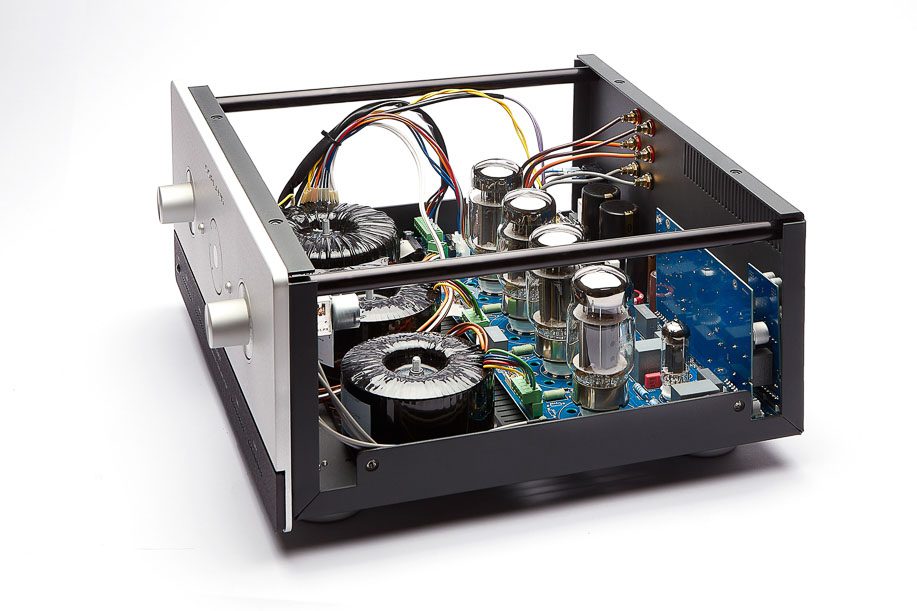
Importantly, the Copland can auto-bias both the power valves and the preamp ones, and in the case of the former, this is accompanied by four groups of LEDs on the front panel. These begin with blue indicators to show the valve is fine but not up to temperature, a green one for normal running, followed by orange (caution) and red (overheat). In spirited use, the indicators will blip into the orange like a heroically inefficient VU meter. In practice, the Copland has shown enough power in my test space to sit resolutely on green throughout. Copland states that the lights can be turned off but, on the review sample at least, the green LED stays lit regardless of the setting.
No more baskets!
An unusual feature of the Copland is the use of toroidal output transformers. This is new for the CTA407, as previous models have used more conventional basket-type designs. As well as the power supply, two smaller toroids are mounted at the front of the chassis, and Copland says that the result gives very good linearity and reduces the need for any compensation network. Something that is immediately apparent is that the CTA407 is utterly silent at idle with neither noise from the amp itself nor through the speakers.
Another new addition for the Copland is the phono stage. The CTA405 used an all-valve arrangement, while the CTA408 switched to a solid-state design that closely resembled the ones used in the hybrid integrated amps. The CTA407 has been given a new phono stage that uses a recently released version of the legendary 2SK147 low noise FET-transistors, originally launched by Toshiba in the early 1980s. This is a moving magnet (or high-output moving coil) only, but it would not be too hard to use an external step-up if you wished. As well as the phono input, there are four line inputs and a tape loop, all on RCA connections.
The capability to run a wide selection of power valves is welcome but it does have some consequences. The Copland is a big amplifier; 215 millimetres high and 420 deep. It doesn’t fit on the shelving section I traditionally use for amps, and you will need to ensure that you have plenty of room in any system you plan on using it in. The reality is that, unless you change for bigger valves, the CTA407 is bigger than it ‘needs’ to be, but this keeps temperatures sensible in use.
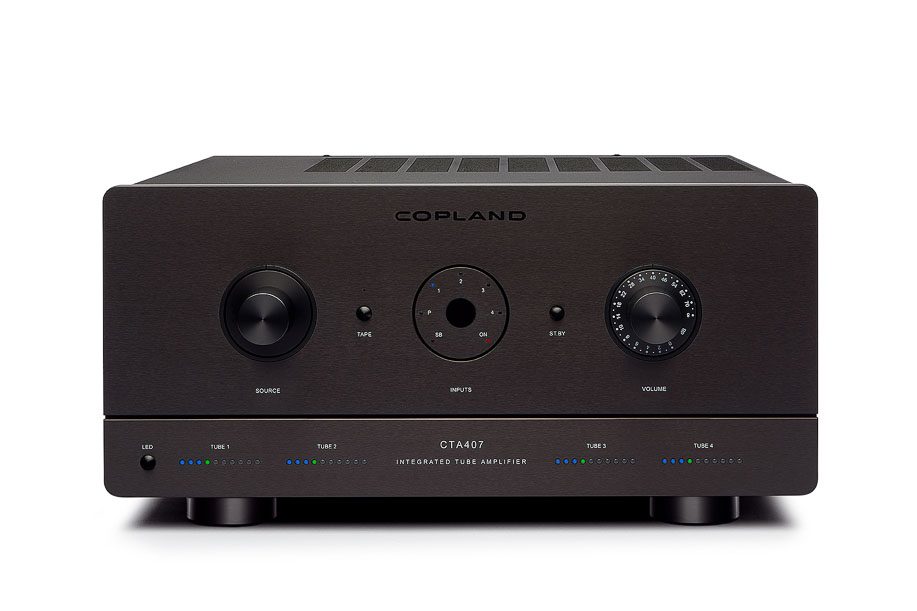
The size feeling is enhanced on the silver version by the lower fascia where the LEDs reside being black. I’m not wildly keen on the effect and were it my £6,800, I would probably choose the back finish that looks more harmonious. Every other aspect of the front panel is a joy, however. Copland maintains the great Scandinavian tradition of good knobs and the pair fitted to the CTA407 are exactly as one would expect; a joy to hold and possessed of a feel that bits of kit that cost many times what the Copland does cannot always achieve. The central input indicator around the IR window works like a charm and gives the CTA407 the Copland aesthetic.
As you might hope, the rest of the amp is very well bolted together. The cover needs to be removed to fit the valves, and when you remove the screws to do so, everything lines up with an accuracy that speaks to a certain fastidiousness. The only slight detractor is that the buttons on the remote are prone to sticking which in the case of volume up is not ideal.
Happy little foibles
I’m happy to forgive the Copland a few foibles, though, because it manages to channel everything that had me fall in love with the original CTA405 in the first place. Connected to a pair of Focal Kanta No1 stand-mounts and a Chord Electronics Hugo2 and 2Go acting as a source, the CTA407 walks the same path as the original. Central to this is that there’s very little sense of a ‘valve fingerprint’ to the presentation, particularly any negative connotations you might associate with them. Park someone blindfolded in front of the Copland, and they won’t automatically twig what topology is involved.
The reason for this is exhibited when you listen to Imogen Heap’s Speak for Yourself [Megaphonic]. Heap’s delicate vocals are delivered over electronic notes that run the full gamut between sparse and potent. It’s these deeper sounds where the Copland is in its element because it has an utterly unflappable grip on the bottom end. Beyond out and out depth, there is a texture and detail to what the CTA407 does that isn’t ‘good for a valve amp’; its level of authority frequently eludes amplifiers full stop.
This provides a foundation for everything that the Copland does, which means you never feel you are playing the ‘wrong’ music on it because it has the control, authority and out and out punch to make anything sound as it should. It’s a largely psychological stumbling block; after all, any amp will play anything you want, but the Copland will take on a spirited rendition of Renegade Soundwave and sound like it relishes the task.
From this, the Copland then lets those valves shape its performance. Again, it’s never overt in how it goes about this, but there is a contiguity to its midrange that consistently makes its presence felt. Neither the Chord front end nor the Focal speakers used for listening would qualify as ‘warm’ but, with the Copland tying them together, there is a sweetness to Hayden Thorpe’s vocals in Moondust for my Diamond [Domino] that is simply gorgeous. He’s a vibrant, tangible presence around which the music builds, and there is a space around the whole performance that extends beyond the speakers and is positively immersive. It grows and shrinks effortlessly with the material being played, neither lending unwanted scale to smaller pieces nor constraining larger ones.
Unflappable
This soundstage is usefully unflappable too. Even with the considerable scale of Cinematic Orchestra’s Live at the Royal Albert Hall [Ninja Tune], the Copland feels utterly unstressed and doesn’t give so much as a flicker of orange LEDs even when reproducing the full rank of musicians. The Kanta No1 is a reasonably sensitive speaker, but it benefits from being driven properly, and the Copland excels at providing this power. Much is made of the 6550 and its derivatives’ ability to give the qualities we seek from valve amplifiers while giving you real-world outputs. Still, Copland delivers on this in a way that does justice to both.
You may also find yourself making some adjustments to your vinyl front end to use the phono stage. I fitted out my Vertere MG-1 MkII with the company’s Sabre moving magnet cartridge allowing it to run into the Copland directly. The results were good enough that I would not rush to seek out an external phono stage. Despite being entirely solid state, the phono stage doesn’t alter the balance of Copland’s presentation, and it is impressively quiet. It allows it to deliver Sarah Jarosz’s gentle and gorgeous World on the Ground [Rounder Records] in a manner that makes sure that, while your attention is focused on Jarosz, the supporting instruments sound rich and real and that same effortlessly space and three-dimensionality is maintained.
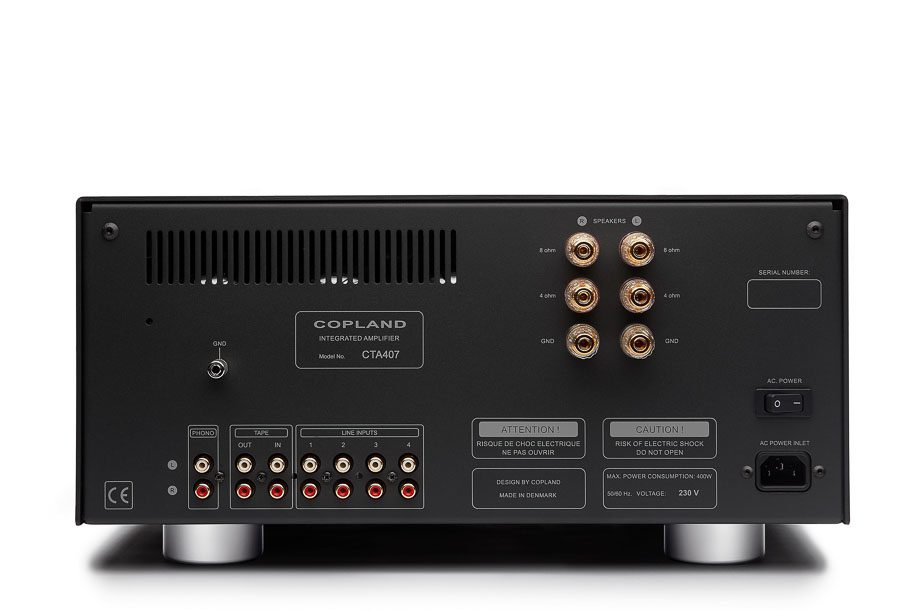
Then, like the other inputs, you can invite the Copland to hammer its way through Orbital’s Optical Delusion [London Records], and there is the heft and authority to ensure the exercise doesn’t feel ridiculous. The Vertere turntable and cartridge produce naturally effortless bass to help the Copland. Still, there is no hiding that the amp has a potency that belies the fifty-watt output and how it is being created. A moving magnet phono stage on a nigh-on seven-grand amplifier will always be slightly out-of-place and therefore not something every owner will automatically use (most owners will either demand MM/MC onboard phono sections or have their own separate phono stage), but it’s very good.
Huge tracts of tractability
All this ties into tractability that endeared the original CTA405 to me and has made the transition to the new amplifier wholly intact. When you don’t want to drive the bolts out of it, the Copland is every bit as happy being used at low volume levels and is entirely forgiving of poor recordings. I didn’t test the business of running my television into it; perhaps the last threshold of considering valve amplifiers to be above mundane tasks like that, but I suspect it would be perfectly good at that too.
The result is an amplifier that takes the same effortless all-around ability that Copland delivers across many of its products and balances that ability with useful new skills. Having the means to choose different power valves gives the CTA407 the scope to handle speakers that would have many valve amplifiers wilting under the strain. The new phono stage offers considerable promise for other applications going forward too. Beyond all this pragmatic praise is the more intangible aspect that the Copland makes me every bit as happy as the original 405 did. It has the clout to handle my more cretinous music completely without strain. Still, it retains a delicacy and gorgeous tonality when it’s time to be more decidedly audiophile. I’m sure that the next box to pass through will generate the traditional moment of excitement, but, likely, it won’t be as tangible as this one was.
Technical specifications
- Type: Integrated valve amplifier
- Power output: 50w 4/8 ohms
- Inputs: MM phono, four RCA in, tape input
- Input impedance: Line 50 kOhms, phono 47kOhms
- S/N ratio (IHF-A): 100 dB
- THD: Less than 0.5 % at all levels
- Weight: 20kg
- Price: £6,800
Manufacturer
Copland
UK distributor
Absolute Sounds
+44 (0)208 971 3909
By Ed Selley
More articles from this authorRead Next From Review
See all
PrimaLuna EVO 100 phono preamplifier
- Apr 22, 2024

Reiki Audio SuperSwitch Master Pro + Servant Pro
- Mar 27, 2024

Melco Audio N1-S38 music server
- Mar 27, 2024









